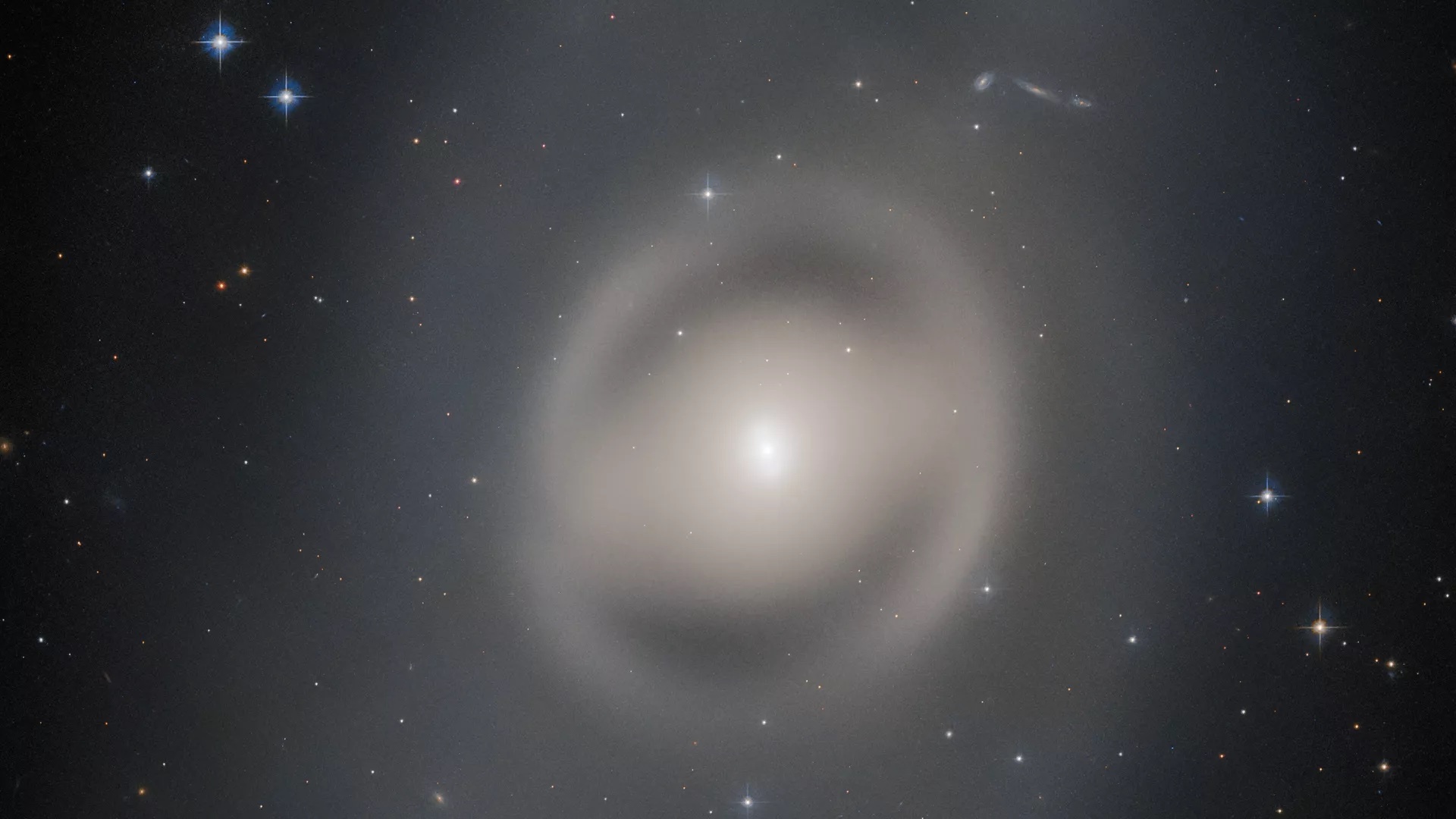17.08.2023
This sighting is part of a census that aims to find tons of galactic views Hubble hasn't set eyes on before

This lenticular galaxy, NGC 6684, lies 44 million light-years from Earth in the constellation Pavo. (Image credit: ESA/Hubble & NASA, R. Tully)
A new image from the Hubble Space Telescope captures a distant galaxy cloaked in a ghostly haze. The recent image was taken using Hubble's Advanced Camera for Surveys.
Known as NGC 6684, this lenticular galaxy — a cross between a spiral and an elliptical galaxy — is located roughly 44 million light-years from Earth in the constellation Pavo. Lenticular, or lens-shaped, galaxies have a central bulge and disk, but lack distinct arms like those found in spiral galaxies such as the Milky Way.
Typically, lenticular galaxies also have older stellar populations because there isn't much interstellar matter within them. Such dust and gas is necessary to fuel the creation of new stars. As a result, the galaxies emit a pale light, which, paired with their indistinct structures, appears "ghostly," according to a statement from NASA.
Hubble snapped this new view of NGC 6684 as part of a census of the nearby universe entitled "Every Known Nearby Galaxy." The survey "aims to observe all galaxies within 32.6 million light-years that the telescope has not already visited," according to the statement.
"Before this program began, Hubble had observed roughly 75% of these nearby galaxies," NASA officials said in the statement. "Completing this census will reveal insights into the stars making up a wide variety of galaxies, in a wide variety of environments."
The Pavo constellation, where NGC 6684 is located, can be found in the southern sky and is one of four constellations that are collectively known as the Southern Birds. Pavo translates from Latin to "peacock."
The Hubble Space Telescope is a joint project led by the European Space Agency and NASA. The recent image of NGC 6684 was released on Aug. 11.
Quelle: SC

